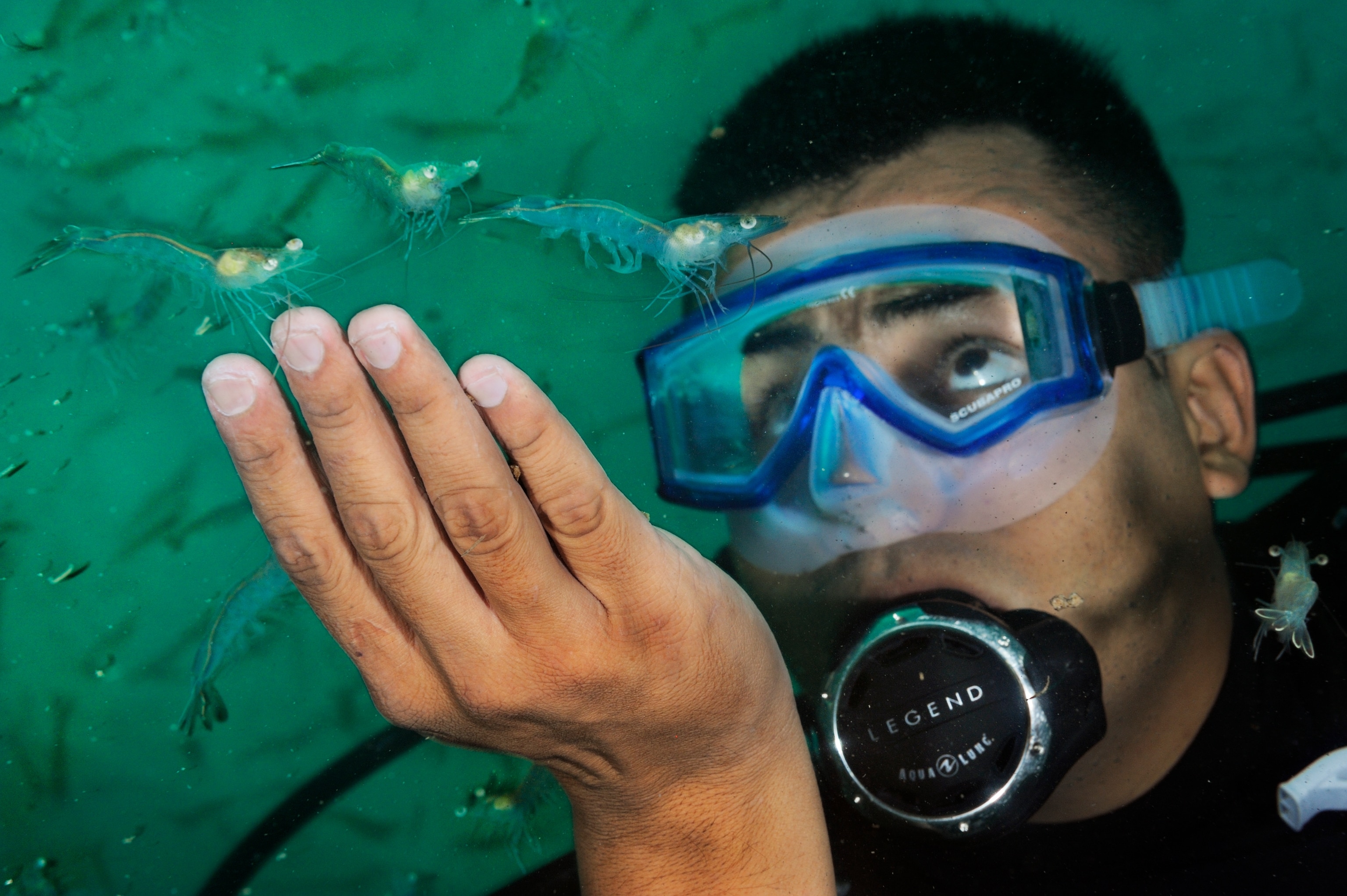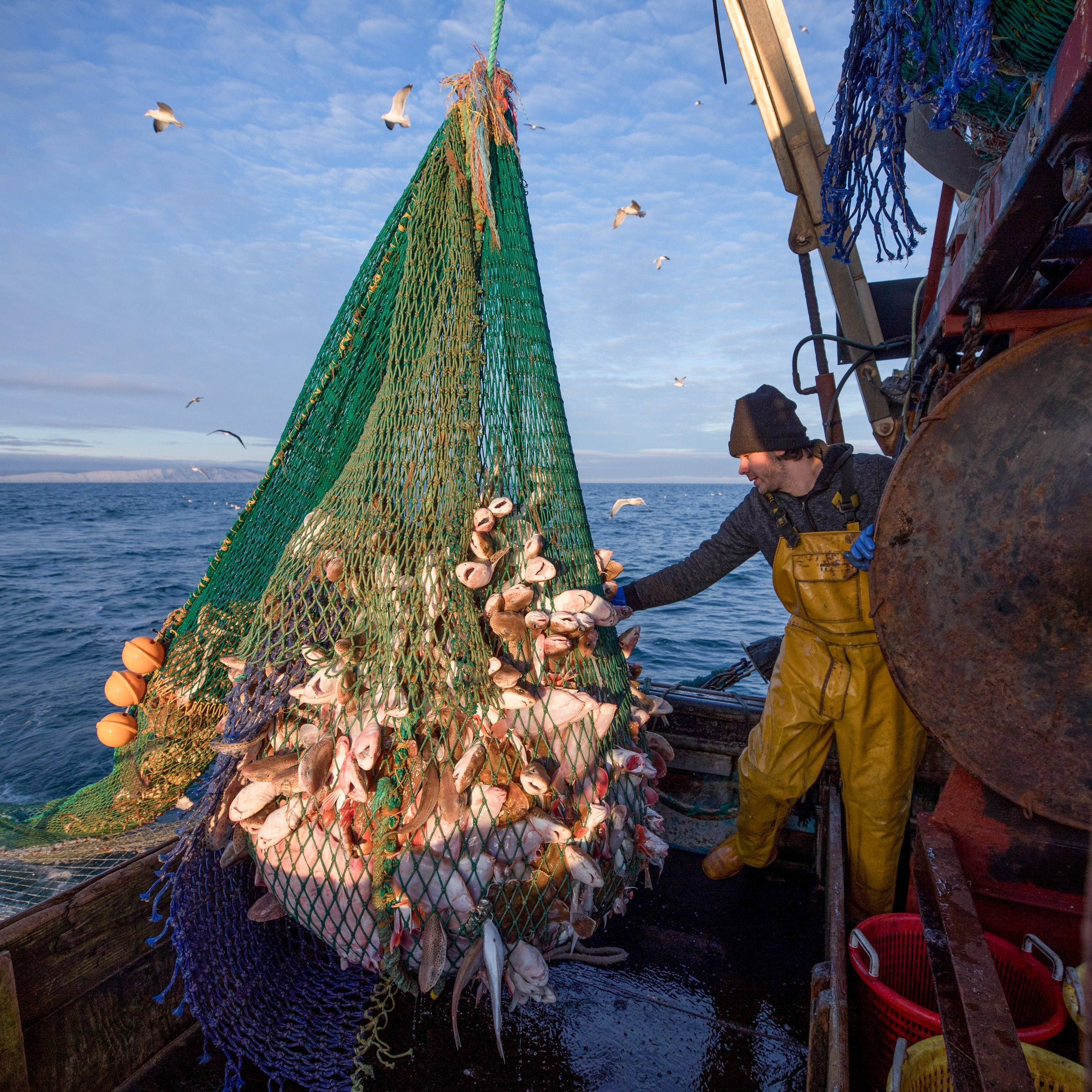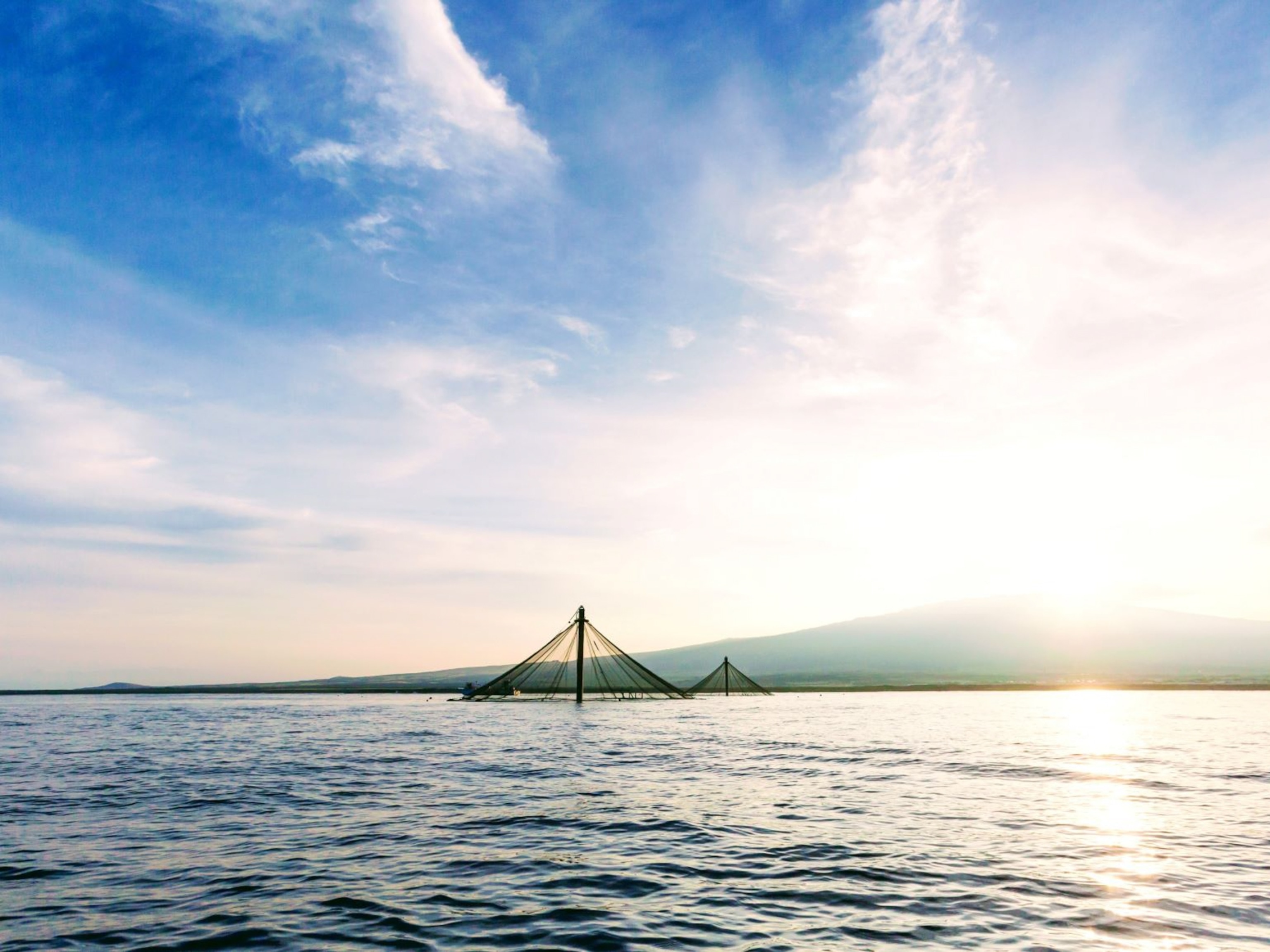
Finding Ways to Feed the Fish That Feed Us
This past weekend, I tasted shrimp grown with feed made from genetically-engineered bacteria.
The bacteria, which are way more interesting than the shrimp, are the brainchildren of Larry Feinberg, CEO and co-founder of Knipbio, a Boston-area startup. They’re interesting because they help address one of the gnarliest problems of a growing human population: feeding them fish.
We’re getting about as much from the oceans as we can. Too much, in some places; many species are severely overfished. We’ve got more and more people, but no more ocean, so fish farming has to make up the difference. Which it has already begun to do. The FAO estimates that, right now, about half the fish we eat are farmed, but that’s expected to increase to almost two-thirds by 2030.
But you have to peel back the cover on that statistic to get to one of the central problems of fish farming: fish eat other fish. Two of the components of all fish feed, the protein and the oil, are commonly made from small wild fish like anchovies and menhaden. Harvesting wild fish to feed farmed fish gets us back to Square One, the overfishing problem we’re trying to solve.
Aquaculture is still a win in that it produces about twice as much fish as it consumes, but we need to do better and Feinberg’s bacteria are one way to do that. The microbes are about 60 percent protein, and have been genetically modified to closely match the protein needs of fish. “Instead of beer, we’re brewing protein,” says Feinberg, explaining the process by which he ferments his product. The bacterium, originally a lab-created, genetically engineered microbe, multiplies on a diet of methanol, giving up carbon dioxide in the process. On the sourdough model, some are kept back to start the next batch.
Feinberg isn’t the only one trying to find a substitute for the protein in the diet of farmed fish. Fish physiologist Rick Barrows has a full-time job evaluating feed ingredients–60 just last year–for the U.S. Department of Agriculture at the Fish Technology Center in Bozeman, Montana. He’s tested some early versions of Feinberg’s Knipbio protein, and thinks it’s very promising.
The first clue, oddly, that it might be OK was that “it has a nice smell. My guys down in the feed lab don’t complain,” he tells The Plate. Barrows has found that fish often don’t like the feed that doesn’t pass the human smell test. “We did a study with five different kinds of poultry byproducts. The cheap stuff smelled terrible, and it also had the worst growth.” If it were always true, further experimentation would be moot and Barrows would be out of a job, and he’s quick to note that it’s not a completely reliable test. “Black soldier fly larvae don’t smell good to people, but the fish like it.”
Insects are another promising alternative to fish protein, in part because fish take naturally to eating them. “There’s a lot of potential there,” says Barrows, but he’s concerned about scaling such an operation up to commercial viability.
That same problem is the next hurdle for Feinberg, who predicts his company is still two years away from a cost-competitive product. And cost is the issue, says Barrows. It’s already possible to raise farmed fish without wild fish ingredients, but it’s prohibitively expensive. (The protein is part of the expense, but the more difficult issue is finding a plant-based substitute for the omega-3 fats essential in fish feed.)
One of the reasons cost-competitiveness is within Knipbio’s grasp is because its product comes with a bonus: it also includes the pigments (in the form of carotenoids) that give salmon its characteristic color. “Pigments are one of the most expensive nutrients in fish feed,” says Barrows.
Knipbio’s viability is also dependent on Food and Drug Administration approval, and Feinberg has already begun the safety testing required to get it. Because the bacteria are genetically engineered, the FDA considers them a “novel ingredient,” although they’re not treated differently from other novel ingredients because of the process by which they were created.
“The FDA doesn’t care if it’s GMO or not GMO,” says Feinberg. “They care if it’s safe.”
Right now, protein derived from soy is the most widely-used alternative to fish meal, but both Feinberg and Barrows point out advantages of a lab-generated protein. “In a 100-acre facility, we can equal the production of 10,000 acres of soy,” says Feinberg. He adds that the food that his bacteria eat–methanol–can be generated from a wide variety of sources, including trash. The microbes are also versatile; with a tweak, they can be customized for different kinds of fish.
Barrows takes a more wide-angle view. “The ingredients I like the most are the ones that aren’t competing for human or animal feed uses.” Ferment protein from bacteria, and it frees up the soy for us.
Feed formulation obviously isn’t the only problem of fish farming. Both ocean pens and inland tanks have room for improvement: decrease pollution, manage disease, increase energy efficiency. But it’s worth the effort to get this down, because fish have a couple of big advantages over other animals we raise for food. For starters, there’s near-universal agreement in the public health community that fish is healthful. And because they’re cold-blooded, and don’t need to support their own weight, fish are more efficient growers than any terrestrial livestock. A salmon can convert a pound of feed into a pound of fish, while the best land-based agriculture can do is the chicken, which requires about two pounds of feed to create a pound of bird.
Imagine. A healthful meal, grown efficiently with no forage fish caught, no acreage planted. The shrimp I tasted was a preview of one way we might tackle the problem presented by the simple fact that our population grows but our oceans don’t.
And how did it taste? Tasted like shrimp.
Follow Tamar Haspel on Twitter.








